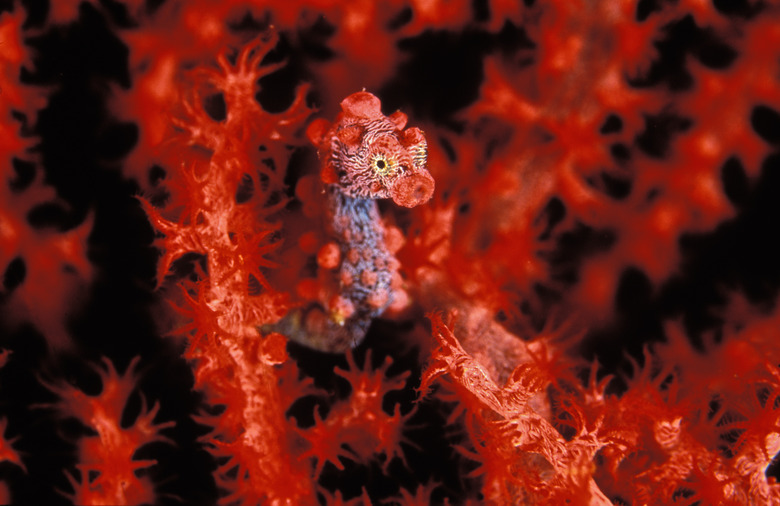What Adaptations Do Fish Have?
Fish have been around a lot longer than we have. The first fish evolved about 500 million years ago. Homo sapiens didn't come along until about 200,000 years ago. For the first 199,850 years or so, their primary interest in fish was to catch and eat them. Then, about 150 years ago, Charles Darwin showed up and began asking questions about animals and their adaptations. There's a very good reason that fish are still around. They are extremely well-adapted to their environment.
TL;DR (Too Long; Didn't Read)
Fish are adapted to move efficiently and sense their surroundings under water. They've also evolved coloring to help them evade predators and gills to get the oxygen they need to survive.
Gills
Gills
Fish, like us and all other animals, need a constant supply of oxygen to survive. Our atmosphere is about 20 percent oxygen, so we simply take it in through our lungs. Lungs are useless underwater, however, as anyone who has nearly drowned can readily and breathlessly attest — even dolphins and whales need to take in oxygen from the atmosphere to survive. Gills enable fish to absorb oxygen from the water. Fish do not chemically break down water, H2O, to derive oxygen. They absorb O2 that is dissolved in the water. There are only about 4 to 8 parts per million of oxygen in water, compared to the 20 percent in the atmosphere we lung-breathing creatures enjoy.
Coloration
Coloration
In the unforgiving fish-eat-fish world of the ocean, survival depends on not being eaten, and not being seen can help. Fish are often colored to match their background, and some can actually change color to blend in with their surroundings. Large spots on the rear parts of some fish fool predators. The spots look like eyes, and the fish appear to be moving in the opposite direction. Predators also use advantageous coloration. Sharks may be dark on their upper sides and light on their undersides. Prey that look down from above might miss the dark shark against the dark ocean floor. Prey beneath might not notice the light-colored shark against the light coming down from above.
Sense Organs
Sense Organs
We humans rely heavily on our sense of sight, and this is important in the ocean as evidenced by the wide array of adaptations based on coloration. Because light does not penetrate to the deepest depths of the ocean, other senses have become much more refined in fish. While we possess chemosensation — taste and smell — some fish have far more sensitive noses than we do. A shark can detect one part per million of blood in water. Some fish have also adapted to detecting vibrations in the water, an idea that humans borrowed and developed into SONAR.
Locomotion
Locomotion
The streamlined bodies of fish are perfectly adapted to moving through the water. While whales and dolphins are very distantly related to fish and evolved more directly from land animals with little resemblance to fish, they feature similar body shapes. This is an example of convergent evolution: the adaptive evolution of similar structures in unrelated species to the same environment. Some differences in locomotion between fish highlight more specific adaptations to individual ecologic niches. Forked or indented tails are seen in fish that rely on swimming rapidly for long periods of time. Fish that do not travel extensively, as part of their survival strategy, tend to have square or rounded tails, which are better adapted to quick acceleration and stopping.
Cite This Article
MLA
Breslin, Andrew. "What Adaptations Do Fish Have?" sciencing.com, https://www.sciencing.com/adaptations-do-fish-8690376/. 24 April 2018.
APA
Breslin, Andrew. (2018, April 24). What Adaptations Do Fish Have?. sciencing.com. Retrieved from https://www.sciencing.com/adaptations-do-fish-8690376/
Chicago
Breslin, Andrew. What Adaptations Do Fish Have? last modified March 24, 2022. https://www.sciencing.com/adaptations-do-fish-8690376/
